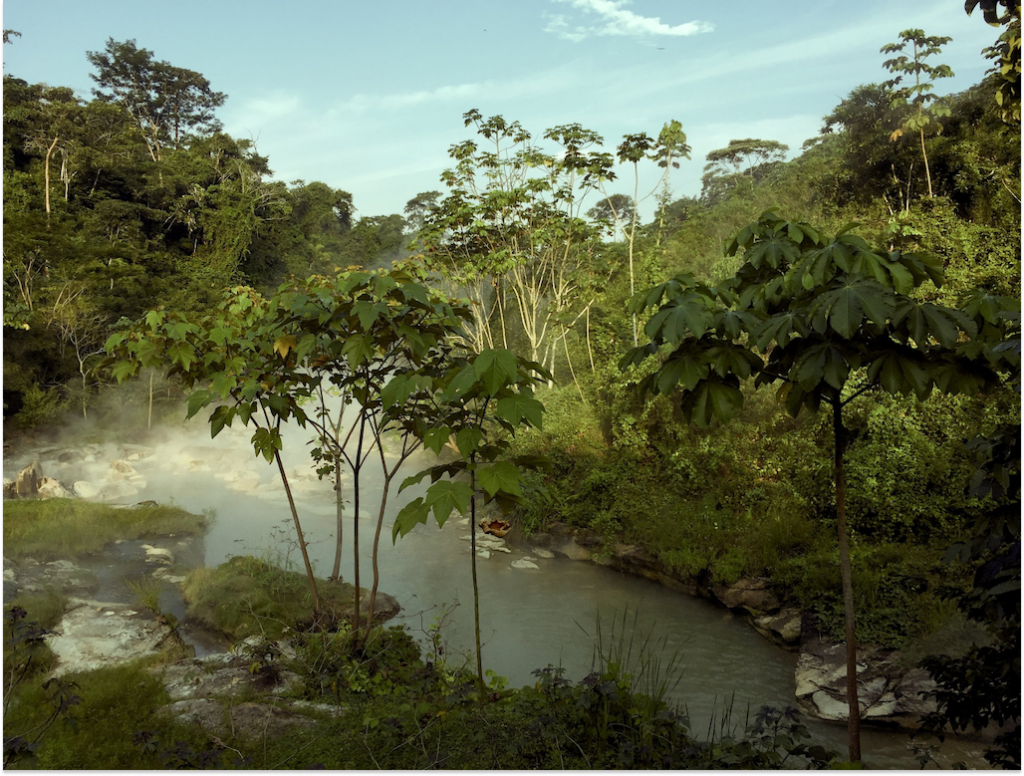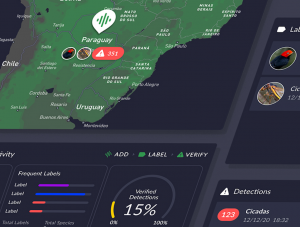What does sound look like? And how can you save the world by designing for its democratization? We joined Beyond and Rainforest Connection for a SFDW discussion to find out.
For most of us, the closest we’ll come to the rainforest is that episode of Planet Earth we’ve had queued up on Netflix for the past year. You know the one.
When we finally hit play, we’ll sit transfixed by the images flashing before our eyes. It’s beautiful — but it’s also TV, and our mind’s fixation on the image means we often neglect another sense that’s vital to understanding this unique ecosystem.
“It sounds more beautiful than it feels”

Amazon Rainforest – Photograph By Lily Betjeman
“In the rainforest, the essence of what’s there is sound. You can’t see 20 feet in front of you, but you can hear for about a mile”. Topher White, CEO and Founder of Rainforest Connection (RFCx), would know. For the past eight years, his organization has created real-time acoustic monitoring systems to help those who wish to end illegal deforestation, and protect vital ecosystems and species.
In early 2019, RFCx joined forces with Beyond, a design and technology agency. Realizing that their monitors were actually capturing fantastic audio arcs from across the globe, White wanted help answering a new question: “How do we translate these vast soundscapes into actionable data points for experts to make meaning out of?”
The sound of science
The answer would come to be RFCx Explorer — the latest addition to an RFCx ecosystem that already includes the Guardian hardware device (live audio streaming and threat detection from the forest), and the Ranger mobile app (real-time intervention of threats, such as poaching and illegal logging).
You can think of RFCx Explorer like a supercharged, scientific Soundcloud. It uses spectrograms to visualize bioacoustic data, while empowering people across the globe to explore, identify, and tag what they hear in the audio streams. The system learns from the annotated data over time, so that AI-driven detections can be made in the future.
That’s a neat summary, but it hides the considerations and complexities the team had to overcome as they sought to balance scientific value with creativity. Nowhere was this more evident than within the spectrograms themselves.
“When you’re designing spectrograms, you really need to think about flexibility,” says Victor Tolosa, Senior Experience Designer at Beyond. “Scientists might want to view it in different modes — and with that configurability, we knew we needed to design it in a way that allows us to overlay things. A lot of work went into figuring out the right balance and contrast for those overlays.”
A great-looking spectrogram will pique the interest, but this was never meant to be a short-term endeavor. The team knew they also had to account for (and design) ways to visualize data over long periods of time — perhaps over the course of an entire year — for sustained engagement and exploration to be achieved.
The importance of connection
Science is clearly the core of the experience, but it needed a counterpoint; something to balance a binary world where things simply are or are not. True success would only come through forging a personal connection with users, and for Tolosa that meant incorporating every level of the UX pyramid of needs.
“When you don’t have a lot of resources, you focus mostly on the bottom of the pyramid where things are functional, reliable, and usable. But at the top of the pyramid, you find ‘pleasurable’ and ‘meaningful’ — and that’s where the emotion comes from.”
Protection and conservation are, by their very nature, emotional subjects; they affect people on a deeply human level that’s impossible to ignore. So Lily Betjeman, Beyond’s Senior Creative Strategist, set about dovetailing the design work with a clear, compelling, and accessible narrative that brought the whole experience to life.
“This was a great opportunity to connect my real-world experience of being in the Amazon jungle in Peru, with working on a real-world product that’s taking those bioacoustics and putting them into the hands of people who can protect it.”
Stories, as filmmaker Jean-Luc Godard once noted, are a great way to give form to the complexities that reality presents to us. By threading a narrative through a scientific experience, Betjeman helped transform something outwardly complex into something immediately relatable — while also showcasing the passion and emotion the team had poured into getting this right.
Seeing beyond the spectrograms

User interface components in the Acoustic Explorer
The final features are still being dialed in, with a view to launching the RFCx Explorer later this year. But for White, this is simply the latest step towards something much bigger.
“What we’re trying to do is get rid of the idea of audio files. We’re looking through windows into an ecosystem — and through that, we believe we can rethink how people view and interact with audio.”
You see, this was never just about the spectrograms. From day one, White and the team have understood that sound’s power extends well beyond what we hear. It can spark conversations, incite action, and force change.
But only if we listen.
And if enough of us do, then maybe — just maybe — we can still change the world for the better.
—-
By: Rory Carroll | Associate Creative Director, Copy | Beyond
You can learn more about the great work Rainforest Connection does here, and connect with Beyond here.

